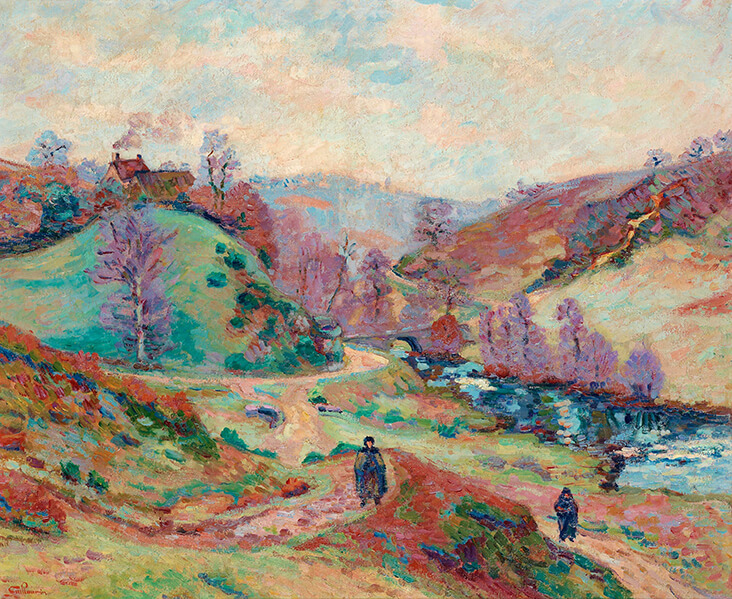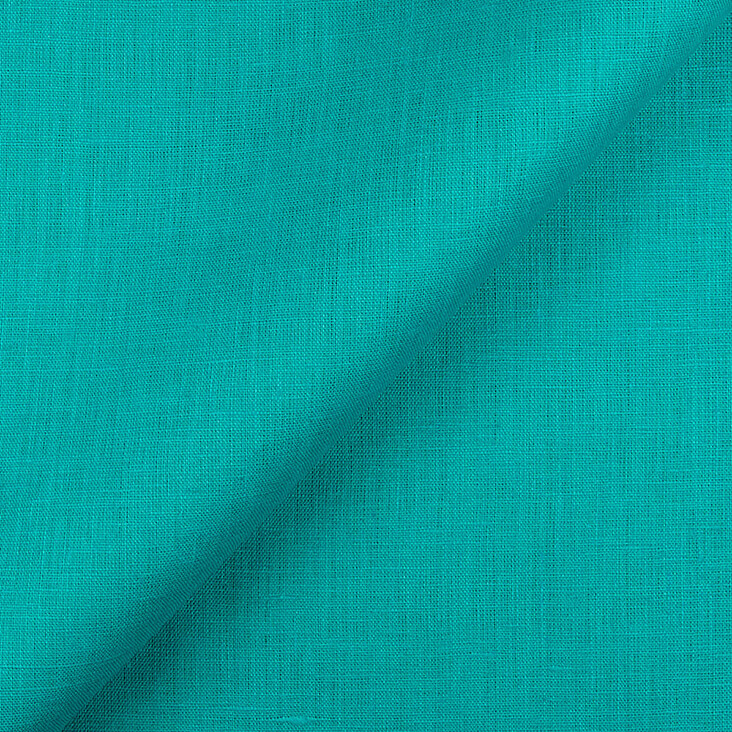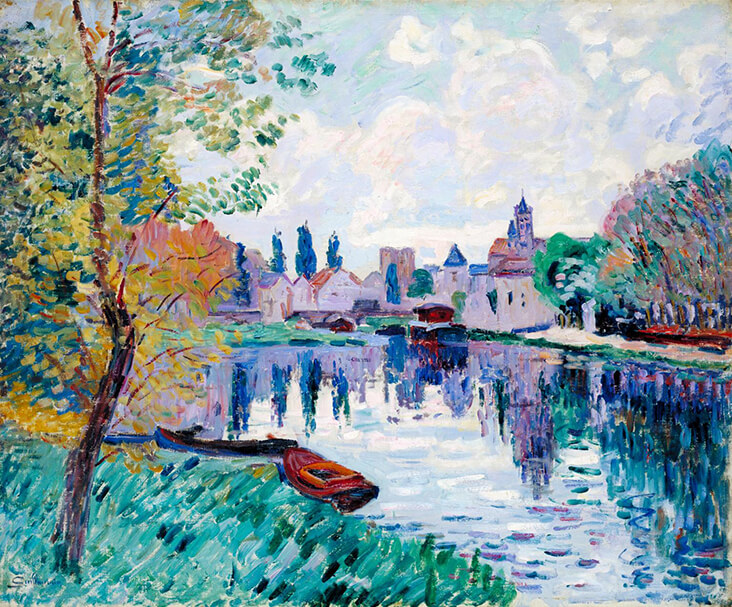FS Colour Series: Ceramic Linen Inspired By Armand Guillaumin’s Glistening Turquoise
Dazzling turquoise blues like that of CERAMIC Linen sparkle across Armand Guillaumin’s canvases, lending them the sparkling vibrancy of the French countryside. A leading Impressionist painter in nineteenth-century France, Guillaumin is world-renowned for his luminous colours which capture the glistening light of his native France, from the rural scenery around Paris to the dappled Creuse River and the sun-soaked Cote D’Azur along the Mediterranean coast.
Guillaumin was born in Paris in 1841 and studied at the Parisian Academie Suisse in 1861; while studying there he met lifelong friends in Camille Pissarro and Paul Cezanne. With these friends Guillaumin was a founding member of the Impressionist group in the early 1870s, sharing similar ideas about painting the fleeting effects of light on the landscape with fresh, pale colours and deft, dappled brushstrokes. Throughout the 1870s Guillaumin would include his paintings in almost every one of the Impressionists’ group exhibitions in Paris, cementing his role within the Impressionist oeuvre. In 1886 Guillaumin befriended Vincent van Gogh and the pair would have a profound impact on one another’s paintings, each encouraging the other to be ever more adventurous with colour and the expressive application of paint, moving beyond the representational language of Impressionism.
Guillaumin held various odd jobs while pursuing his painting career, but when he turned fifty, in 1891, he struck gold, winning 100,000 francs in the French lottery which allowed him to finally take up painting full-time. In the years that followed he focussed predominantly on painting en plein air, soaking up the vitality of his surroundings while capturing them with increasingly heightened shades of green, turquoise and lavender. Landscape with two figures, 1875 exemplifies Guillaumin’s adventurous approach to colour; an autumnal scene glows with warm shades of burnt umber and soft heather grey, but they are slashed into and torn apart with electric-bright tones of aqua green and pale blue which jolt the entire scene to life.
In Tate Gallery’s joyously vibrant Moret-sur-Loing, 1902, afternoon light glistens across the foreground, turning cool, damp grass a rich shade of watery turquoise blue, a shade that ripples through glassy, prismatic water and into the bristling, windswept horizon beyond. Made three years later, The Dam at Genetin, Crozant, 1905 was painted in the sleepy French village of Crozant in the southern centre of France. Like many artists, Guillaumin frequented Crozant again and again to paint the flickering, sparkling water of the river Creuse and the great wilderness around it, earning his place as the leader of the School of Crozant. In this work he captures the gloomy light of gathering evening as grey clouds swarm overhead, while trees and marshy grass below fall into murky, muffling shades of mossy green and dusty lilac. Again, Guillaumin enlivens these tones with acid sharp shades of turquoise blue that streak into the foreground and across the horizon, dappling mountainsides and the tops of trees with the dewy freshness of cold, light rain.
In the later Autumn Landscape, Agay, 1907, Guillaumin continues to explore this same balance of warm and cool tones with a more exaggerated colour scheme, typifying the spiritual and emotive approach to colour of his later years. The golden toffee, caramel and lilac tones of autumn sweep over distant windswept trees and mountains applied in thick streaks and daubs of oil paint that lend them a visceral solidity. Cutting the image in two, a triangular expanse of cold wet grass slices out across the foreground, as juicy and sour as a ripe apple. Bands of mint green shadow run across it, flickering to-and-fro among the grass blades as if caught in a bracing gust of wind, suggesting the slow and steady encroachment of winter across the land.







































Leave a comment